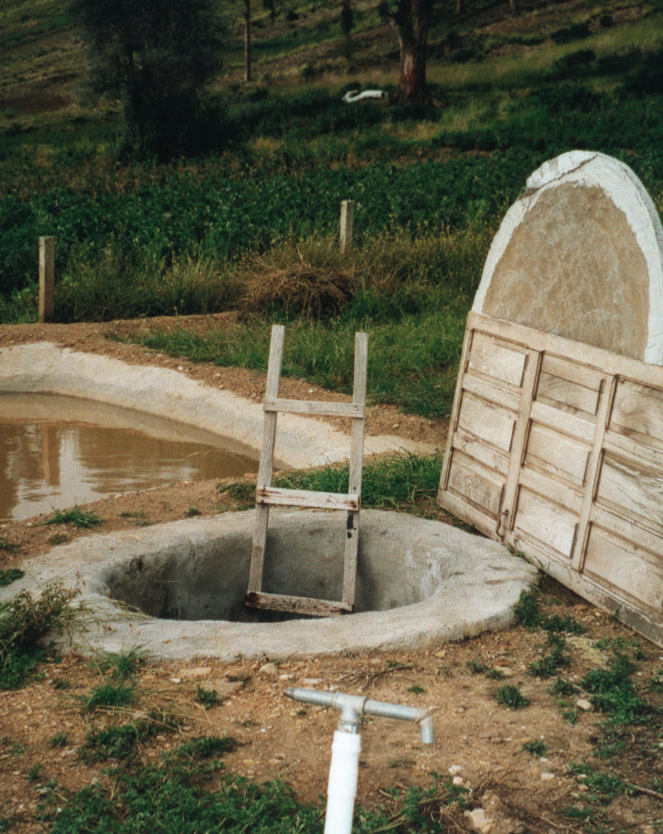Difference between revisions of "Underground tank"
m |
m |
||
| Line 1: | Line 1: | ||
[[Image:Underground_tank_icon.png|right]] | [[Image:Underground_tank_icon.png|right]] | ||
| − | Where access to groundwater is limited, [[Rainwater harvesting|rainwater harvesting]] in underground tanks can be an effective and low-cost | + | Where access to groundwater is limited, [[Rainwater harvesting|rainwater harvesting]] in underground tanks can be an effective and low-cost alternative. Water stored in the wet season can be used in the dry season and lifted from the tank with a [[rope pump]] or with a [[Deep well pump|deep well pump]], which can elevate water up to 30 m. |
| − | |||
| − | |||
| − | |||
[[Image:Underground_tank.PNG|thumb|right|150px|Underground storage of rainwater in Bolivia ]] | [[Image:Underground_tank.PNG|thumb|right|150px|Underground storage of rainwater in Bolivia ]] | ||
| Line 22: | Line 19: | ||
For example 3500 liter. | For example 3500 liter. | ||
| − | |||
== Costs == | == Costs == | ||
Material costs for EMAS tanks consist of sand and four 50 kg bags of cement for each tank. | Material costs for EMAS tanks consist of sand and four 50 kg bags of cement for each tank. | ||
| + | |||
| + | == Examples and initiatives == | ||
| + | The Brazilian government, with support from organisations such as UNICEF and IRCSA (International Rainwater Catchment Systems Association) started a programme to construct one million rainwatertanks in Brazil. | ||
| + | |||
| + | |||
| + | Practica foundation is testing various options for low-cost storage and groundwater recharge like the "Reed cement tank" and the "Tube recharge". | ||
== External links == | == External links == | ||
Revision as of 15:04, 30 May 2008
Where access to groundwater is limited, rainwater harvesting in underground tanks can be an effective and low-cost alternative. Water stored in the wet season can be used in the dry season and lifted from the tank with a rope pump or with a deep well pump, which can elevate water up to 30 m.
| Advantages | Disadvantages |
|---|---|
| |
|
Capacity
For example 3500 liter.
Costs
Material costs for EMAS tanks consist of sand and four 50 kg bags of cement for each tank.
Examples and initiatives
The Brazilian government, with support from organisations such as UNICEF and IRCSA (International Rainwater Catchment Systems Association) started a programme to construct one million rainwatertanks in Brazil.
Practica foundation is testing various options for low-cost storage and groundwater recharge like the "Reed cement tank" and the "Tube recharge".
External links
- General www.rainwaterharvesting.org www.unep.or.jp www.rainfoundation.org
- Recharge www.practicafoundation.nl
- Storage www.emas-international.de

